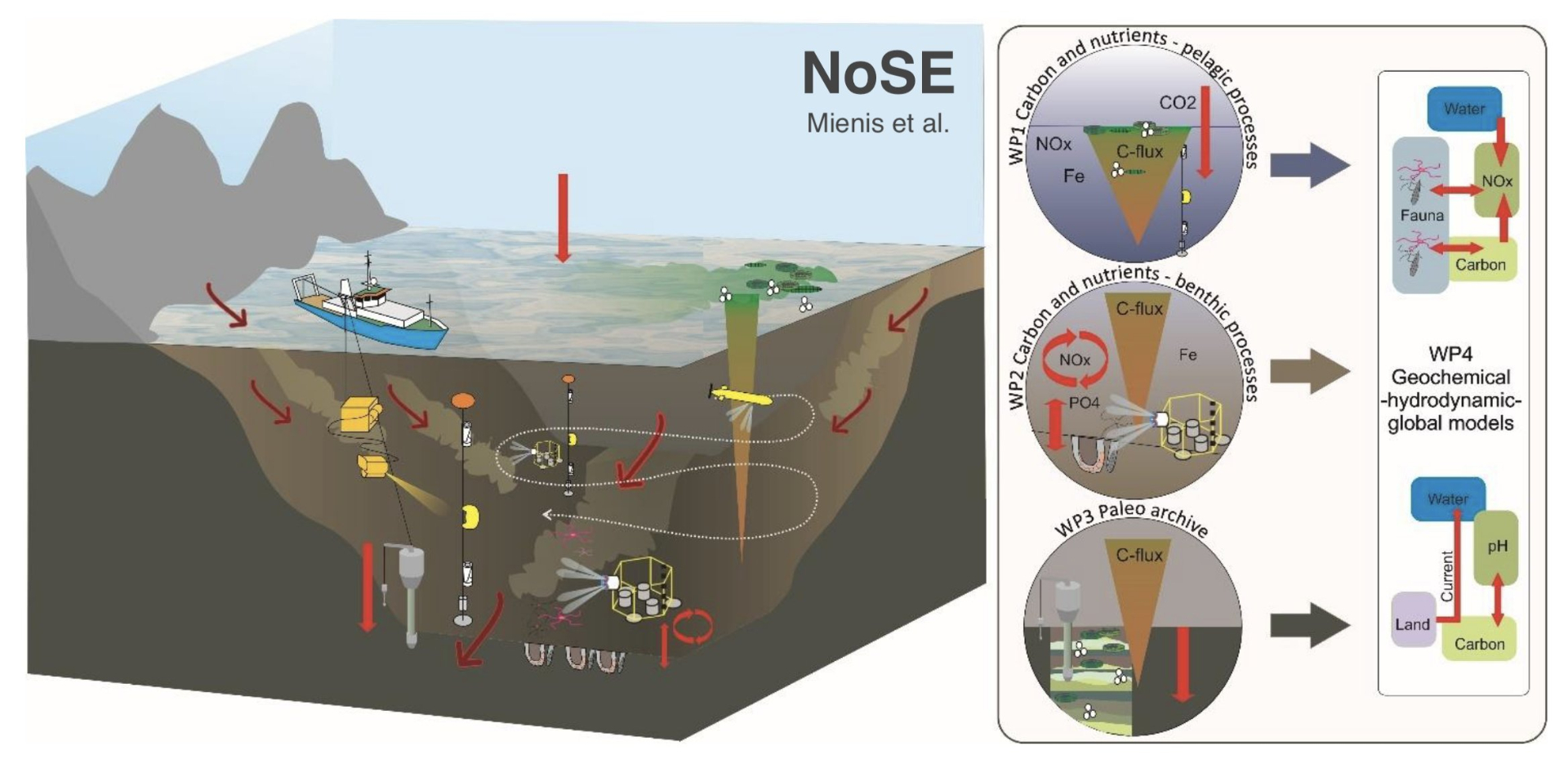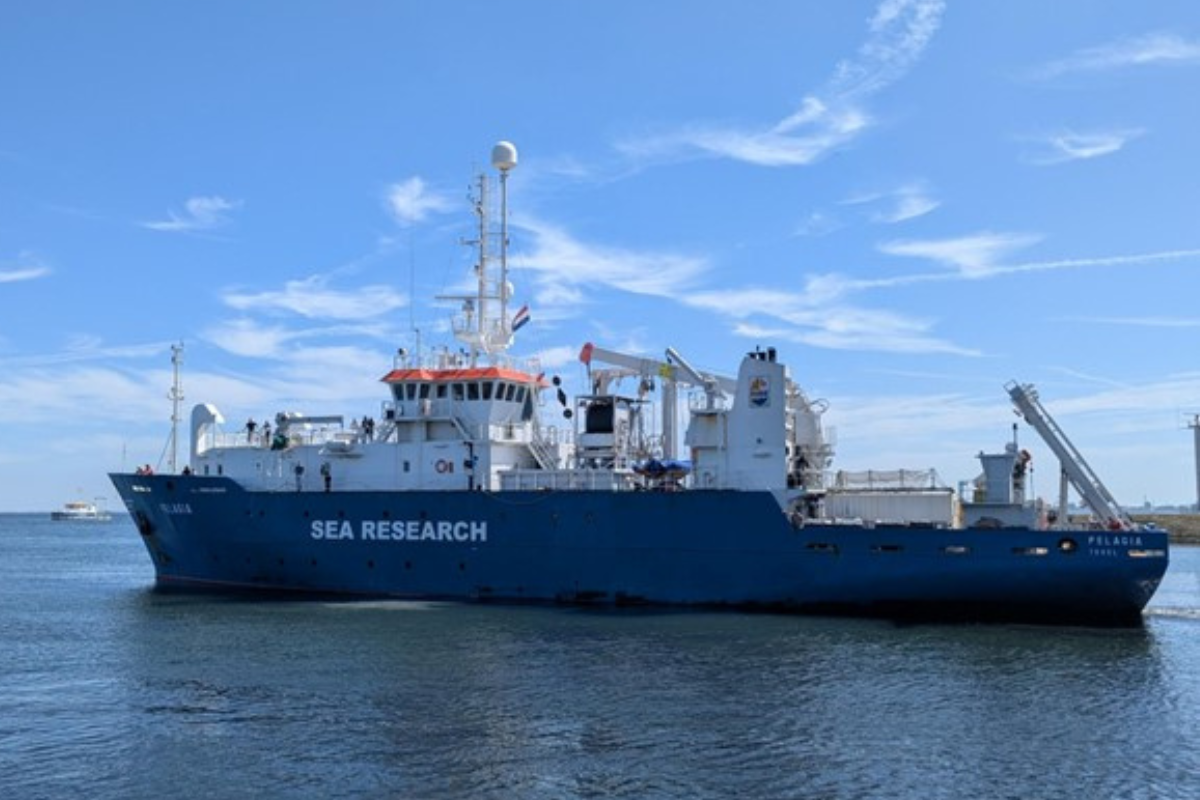
Our study area is situated in the Norwegian Trench, which is the deepest part of the North Sea and the main outflow route of water from the North Sea into the Atlantic Ocean. During the expedition we will follow the outflow water and study processes that influence the carbon and nutrient cycles to determine what is exported to the Atlantic Ocean and what is deposited in the Trench. Our main objective of the current cruise is to recover two moorings and a benthic lander that have been deployed 14 months ago. All three systems are equipped with a large variety of instruments to measure hourly to seasonal changes in temperature, pH, oxygen, amount of particles in the water column and current speed and direction. In addition a sediment trap is attached to each system that will collect samples to determine particle and carbon fluxes.
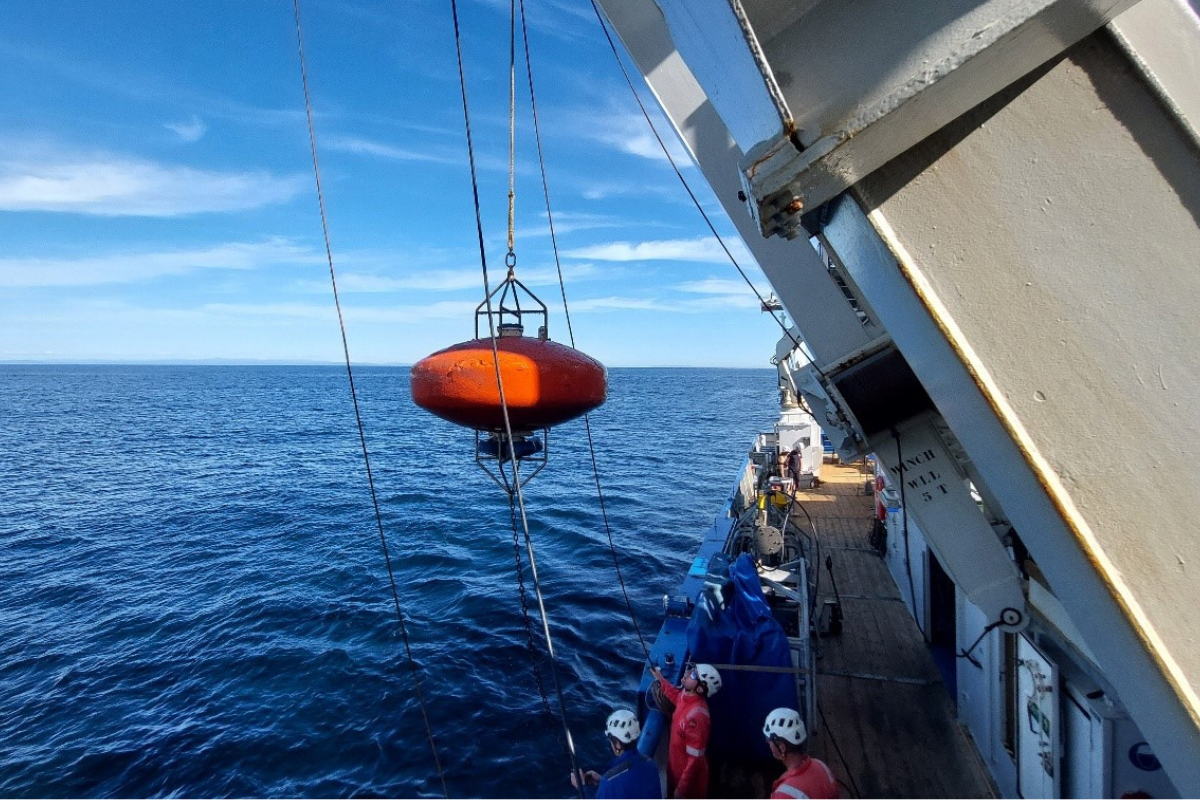
Departure (by Lucia Kranawetter)
Last week we prepared lots of boxes with various items and equipment for the upcoming NoSE expedition on RV Pelagia. Packing and transporting the boxes is a group effort. The scientists think about all the fun stuff they want to do onboard and pack all sorts of things in boxes. You don’t want to run out of certain items during a seagoing expedition, so, just in case, they pack two or three times more of those items. Then the technicians take over and transport all the packed boxes carefully to the ship where together with the crew the boxes are loaded onto the ship. Equipment that is too heavy to carry can also be brought into the ship by opening the upper deck.

It is the third time now that we sail to the Norwegian Trench in the North Sea within the NoSE project. The plan is to collect all the equipment that we deployed in the Norwegian Trench last year. The locations between the deployed equipment are quite far from each other, so we can use the time in-between to collect more samples from the water column and the sediment. This will be the last cruise on RV Pelagia for everyone from the science team. One last time to walk on the wooden deck and enjoy the beautiful sunsets and the family-like environment. During the next 11 days we will be at sea and update you on this blog.

Let’s dive to 100 m above the seabed and have a look at the Mooring data (by Anna Enge)
Within the NoSE project, we deployed two Moorings in May 2024 in the Norwegian Trench and let our instruments, e.g. ADCP (Acoustic Doppler Current Profiler), CT (Conductivity-Temperature sensor), pH sensor and sediment trap, measure at 100 m above the seabed for one entire year. Now, we are back at sea and a couple of days ago we retrieved both Moorings with all our instruments successfully. With these Moorings we aim to study the variability of several processes in high resolution over two years’ time (2023-2025). This data of the lower 100 m of the water column enables us to study the exchange of water and particles between the North Sea and the Atlantic Ocean.
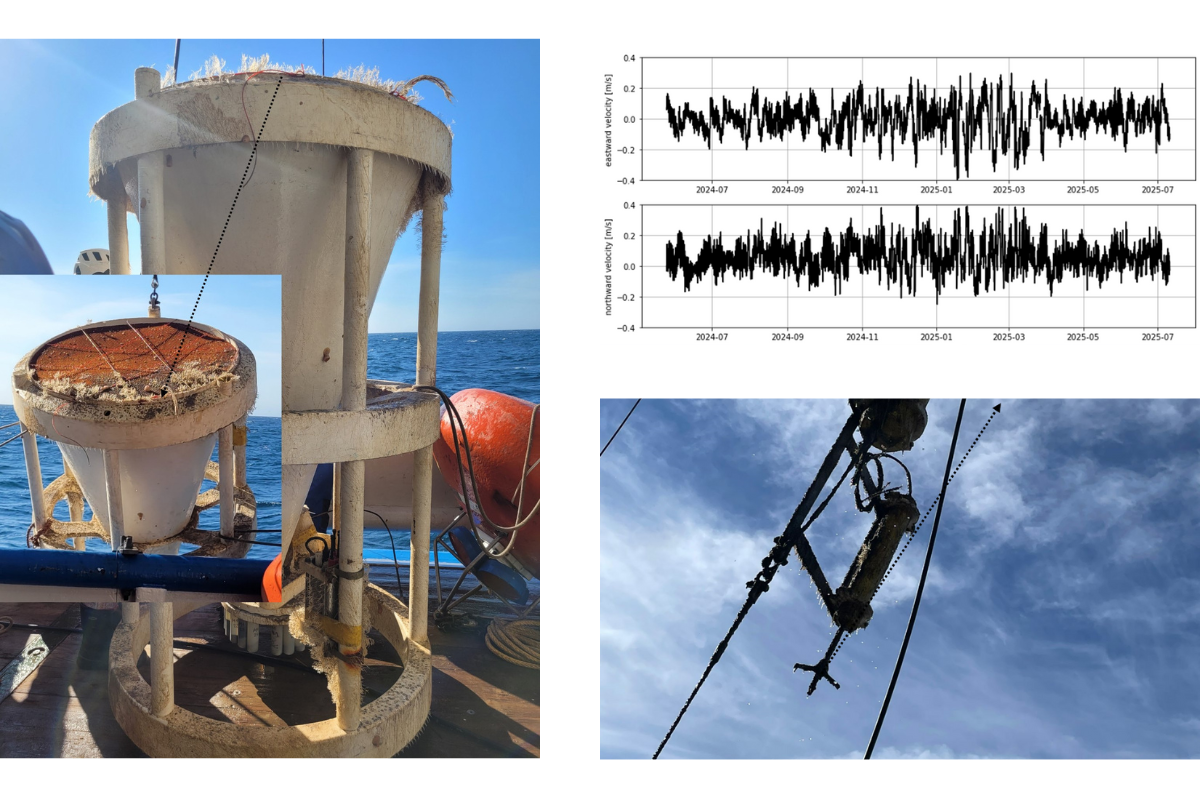
Figure 1 (LEFT): Sediment trap of the Mooring deployed towards the edge to the North Atlantic Ocean at 350 m depth. Figure 2 (RIGHT): ADV recovery from the southern Mooring in the Norwegian Trench. The upper plot shows the preliminary post-processed velocity time series of the eastward and northward current velocities at about 10 m above the bed.
In Figure 1 (LEFT) you can see one of our retrieved sediment traps. Over one entire year, it trapped the vertical and lateral particles that reached the lower water column at the edge of the Norwegian Trench toward the Atlantic Ocean. There are 24 bottles which capture the integrated flux of particles over an interval of 2 weeks. We still need to look at the data but both of the traps captured enough organic material which will tell a very interesting story about particle fluxes in the lower water column over the last year. In addition to all the data we planned to collect, some animals settled down on our Moorings, especially on the sediment traps. As these animals only live in specific environments, their presence provides us with very useful information about the environmental conditions at the Mooring locations. The ADCPs and CTDs provide current velocity, temperature and salinity data from which we can derive the flow dynamics of different water masses, e.g. North Sea and Atlantic Water, defined by their specific Temperature-Salinity properties.
In Figure 2 (RIGHT) you can see the retrieved ADV and a snapshot of the timeseries of current velocities at 10 m above the bed. With the data of last year (2023-2024) and the new data we collected (2024-2025) we can compare interannual variations and extend our knowledge about the flow and particle dynamics in the Norwegian Trench.
CTD processing (by Naniek and Myrthe)
During this NoSE cruise, we, Naniek and Myrthe, were invited to join as master’s students to help with sampling using the CTD. A CTD (= conductivity, density, temperature sensor) measures three different properties of water. In addition to the CTD, there are also water bottles and fluorescence and turbidity sensors attached to the frame. The frame, with the sensors secured to it, is slowly lowered to the bottom of the ocean, allows us to observe the water profile in real-time. Based on this profile, a decision is made about the depths to take water samples from on the way back up.
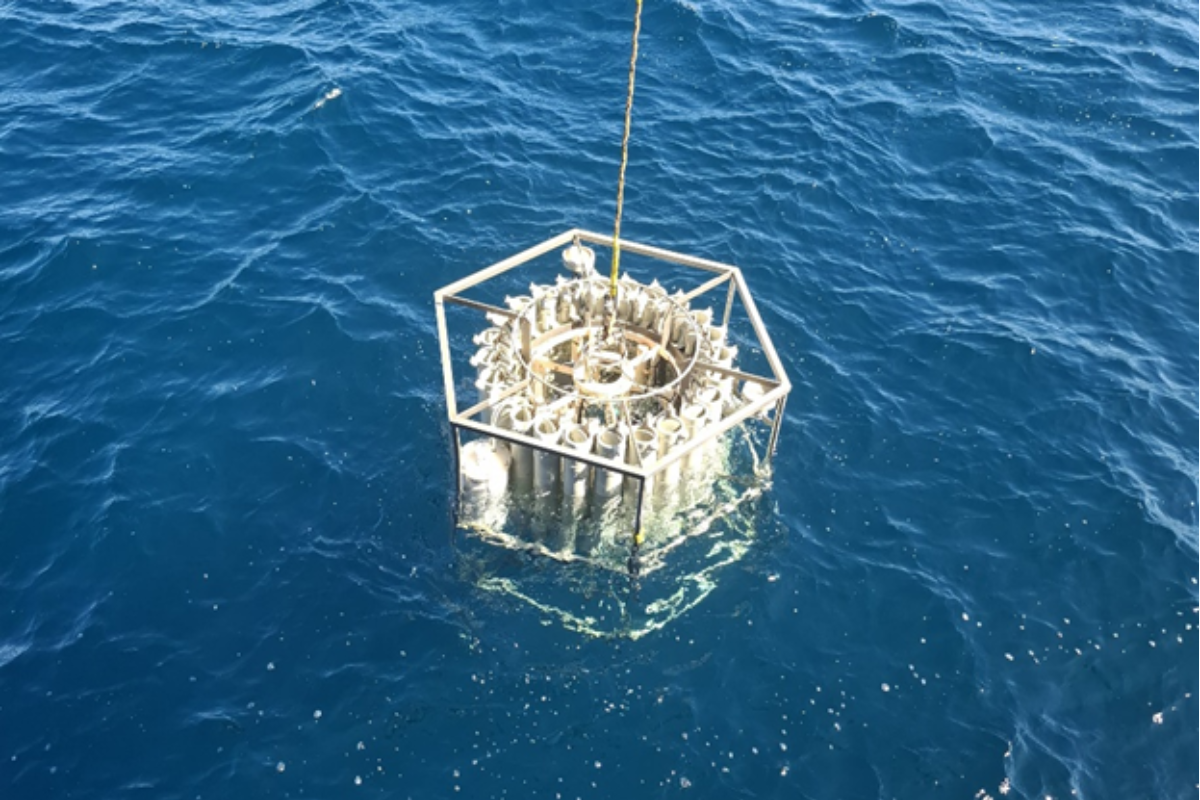
Naniek assisted with the ongoing project of Marina and Margaux. After the CTD was back on deck, first, oxygen samples were taken, with temperatures measured simultaneously. Then, bottles were filled so that they could be analysed in the ship’s lab for alkalinity and pH. Myrthe assisted with the ongoing project of Daan. During this cruise, water samples from various depths were filtered for suspended particulate (organic) matter. The filters have been preserved so that further analyses can later be performed at NIOZ.

